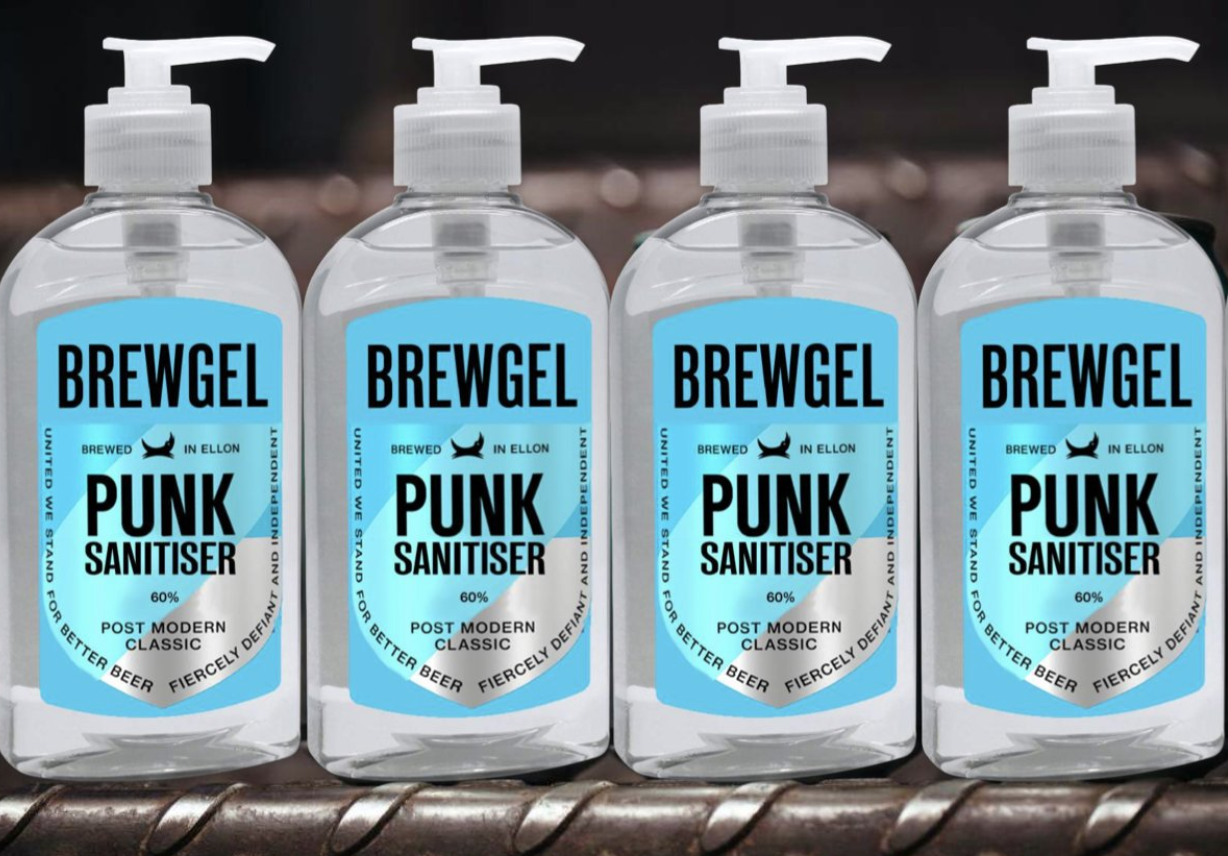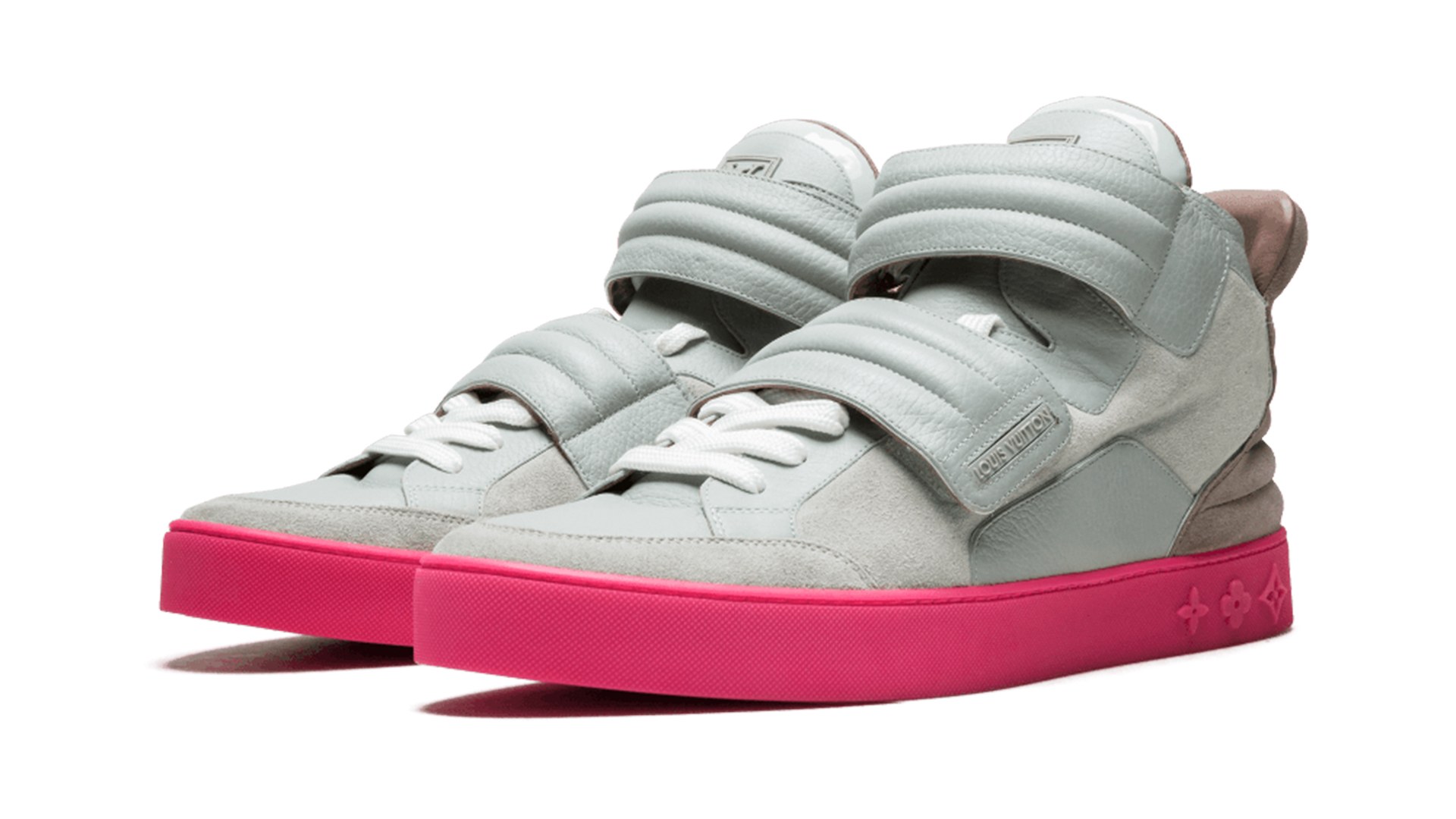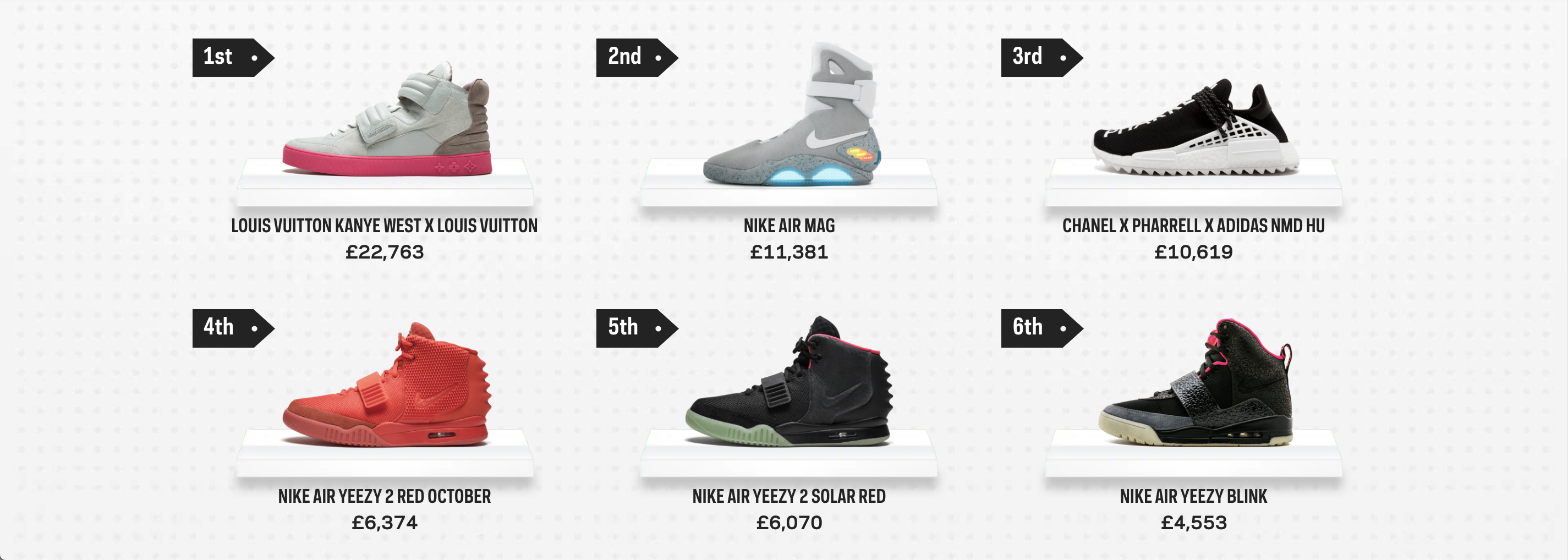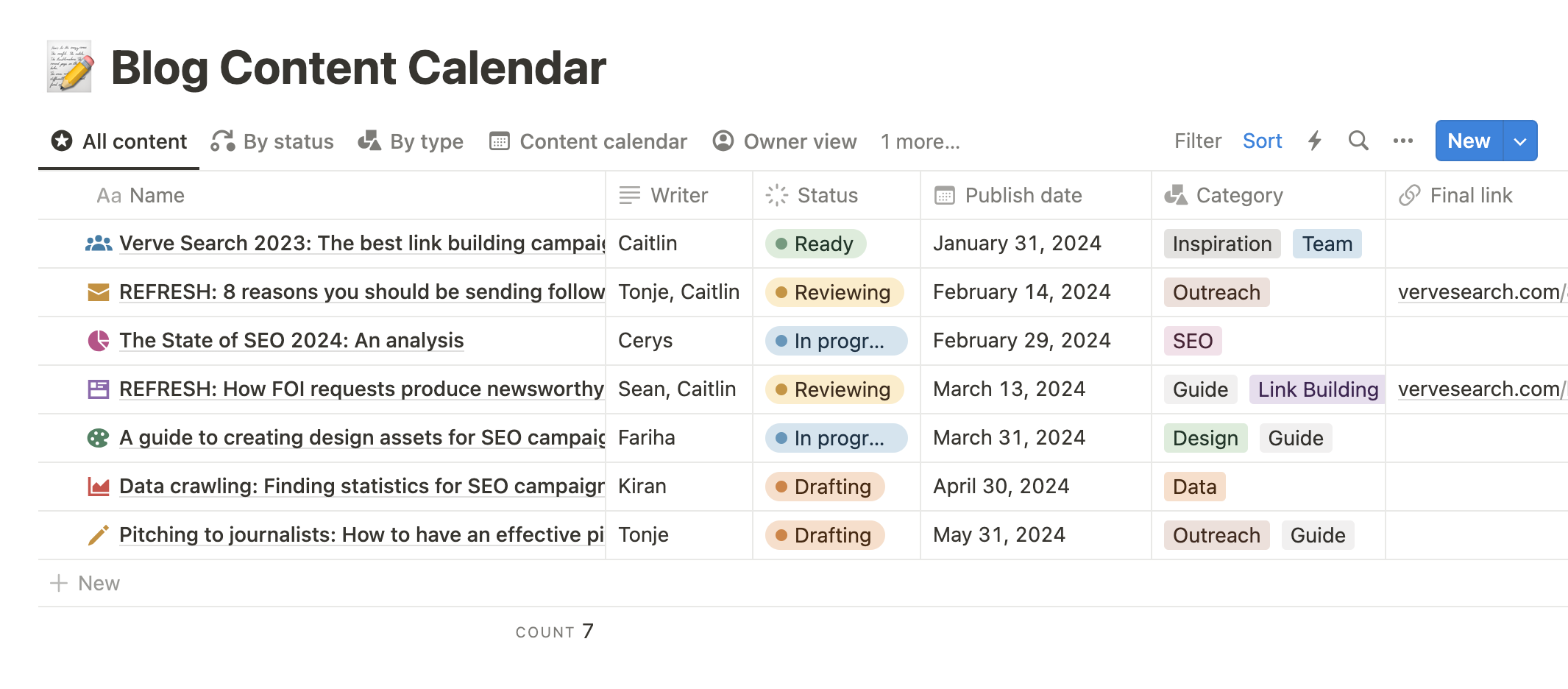How brands are helping people in need during the pandemic
You don’t need to look far to find another alarming statistic or piece of bad news about the current pandemic.
But not all news needs to be negative, particularly at a time like this.
In recent weeks, social media has platformed its fair share of positivity, including Italians hosting gigs on balconies, and help and assistance being offered around the UK and Ireland to those in self-isolation via the hashtag #SelfIsolationHelp.
Good news is on the agenda
Digital PRs will be spending the next few weeks figuring out how best to approach journalists with stories during this sensitive time.
Like any topic, readers will only consume so much bad news about the coronavirus, before looking elsewhere. There have already been calls from editors and reporters at The Yorkshire Post and BBC News to remind us that “uplifting distractions and inspiration” are definitely in demand.
Which is why it isn’t surprising to see that many positive initiatives announced in the past few days have gone on to attract national press coverage.
It’s worth thinking about what positive stories your brand can tell over the next few months, which could go on to support and inspire people who need it, or at least provide them with a welcome distraction.
Positive initiatives from big brands
We have already started to see brands recognise and react to the problems that the coronavirus outbreak is causing to certain groups of people. Below we have highlighted some of these examples, which illustrate how companies can utilise their products and services as forces for good.
Acknowledging the tireless work that NHS staff are facing during the pandemic, Pret has announced that it will give all frontline staff free hot drinks and a 50% discount on food products, such as cakes and sandwiches.
The coffee and food chain has also closed off most of the seating areas in its UK restaurants, which will reduce crowding and cater more towards those who are self-isolating, thanks to a greater focus on takeaways.
A similar initiative is being followed by McDonald’s. The fast food restaurant is offering free drinks to NHS staff, social workers and emergency services.

Domino’s Pizza is offering free pizza in selected stores to NHS workers on Friday 20th March.

Something as simple as a trip to the hairdressers can really rejuvenate a person after a stressful day. In this second example of support being offered to NHS staff, RUSH is offering them a complimentary wash, blow-dry & style throughout what is expected to be the virus’s peak months of March, April and May.

Gigs, exhibitions and public gatherings of all kinds are being cancelled in many countries for the foreseeable future, meaning those who work within the arts and entertainment industries, especially those who rely on it as their main source of income, will be severely affected.
In response to this, Bandcamp announced that 100% of the profits made from purchases on their site on Friday 20th March will go directly to artists and labels. Considering that Spotify pays out less than $0.009 per stream, the amount that an artist can instead earn from unwavered fees on Bandcamp for just one day could make a considerable difference to their personal finances.
Working from home for more than a day or two is something most of us aren’t used to. Recognising that people will need plenty of tips on everything this entails, from staying productive, to managing the wellbeing of themselves and other team members, LinkedIn announced that 16 of its educational videos (equivalent to more than 13 hours of content) are now freely available to watch and learn from.

Coping with self-isolation will be challenging, and there is no telling the extent to which the pandemic may negatively impact on people’s mental health. As a helping hand, Meditation app Balance is giving people the chance to sign up to their app for a year’s free subscription, the offer is open for the duration of March.
Anyone who has ventured into a supermarket this month will know that hand sanitiser is at a premium. In recognition of the issue, Brewdog has announced that it will turn its attention to producing hand sanitiser in its Scotland distillery, saying it will be freely available to those in need of it.

Natural spaces will be an essential outlet for people who are self-isolating. The National Trust has promised to open many of its parks and gardens around the country for people to get out of their homes and “use open spaces to relax and refresh”.
Stockpiling from some shoppers has meant many people in the UK have recently been missing out on everyday essentials. In response to this, Tesco announced a number of changes to how their stores will operate, so that they can “provide more of what people need in a clean and safe environment”.
The changes include: designated hours of the week for the elderly and vulnerable to complete their shopping, a limit of 3 items per shopper on every product line, and new closing hours of 10pm to ensure that stocks can be replenished and its employees can properly rest.

With pubs and clubs continuing to empty or close down entirely due to safety concerns about the coronavirus, bartending is another profession at-risk of unemployment and losing out on a regular pay packet. In the US, Jameson Whiskey has pledged a $500,000 donation to the United States Bartender’s Guild, an organisation that helps empower and foster collaboration between bartenders throughout their careers.
The whisky brand will also match every dollar donated by the public (up to $100,000) to the Bartender Emergency Assistance Programme, which has been established to aid service industry personnel who are experiencing financial difficulties as a result of the outbreak.

Further reading:
Outside of current events, there are plenty of companies that maintain strong ethical standards by giving something back to their communities and workers all year round. If you’d like to read more about them, check out the B Corps directory.
Adage is constantly updating this article with information on how big brands are responding to the Coronavirus outbreak.
This column from the NYTimes dissects how the coronavirus has quickly infected the content that we consume online.
Campaign Spotlight – Insta Wealth
Everyone in digital PR wants to work on a ‘viral’ campaign, content that doesn’t just generate links, but also high-profile TV, radio, print and social media coverage. We want these campaigns to create a story that resonates and gets people talking, with a headline that readers would immediately click through to read. If your campaign can achieve this while talking about some of the most recognisable faces on the planet, then it has every chance of being successful.
This is what we were able to achieve with our best-performing creative campaign to date, Insta Wealth.

Insta Wealth, created for Buzz Bingo, looks at which celebrities and influencers make the most money from sponsored posts on Instagram. Brands realise the social media reach of high-profile accounts with tens of millions of followers and will pay 6-figure sums to have their product featured.
By looking at influencer activity on Instagram we felt positive that we would create something that would produce lots of interesting angles, appealing to a wide range of journalists including lifestyle, celebrity and sports. Instagram rich lists are often widely covered by the press, but analysing sponsored posts enabled us to add something new to the discussion.
To find out how much money each person has earned from their account from these posts, we used Hopper HQ’s Instagram Rich List database, which estimates a ‘cost per post’ figure. For example, Kylie Jenner can earn $1.2m per post to her 139 million followers.
We multiplied the ‘cost per post’ figure by the quantity of sponsored posts appearing on their account. To find out which Instagram user has the most ‘valuable’ followers, we divided their cost per post by their number of followers.
We then categorised each celebrity and influencer to see where they rank compared to their peers. For example, we found that Kendall Jenner makes 4x more from sponsored posts than her sister Kylie.

Our research gave us quite a surprising top story, Cristiano Ronaldo is Instagram’s highest earner, bringing in $47.8m from his sponsored posts. This in itself is a strong headline for outreach, but it becomes even more newsworthy when we found this to be higher than his yearly salary at Juventus ($31m). This stat gave us a headline that we knew journalists would want to cover. You can see below how it was received by Business Insider:

We were also able to frame the story as a comparison between Ronaldo and his Barcelona rival Lionel Messi. Though Messi is second on our list with $23m earned from Instagram, we were able to say that Ronaldo earned twice as much from his sponsored posts. The Sun ran with this headline:

The majority of Insta Wealth’s coverage came from variations of the Ronaldo story. However, many publications also covered the secondary angle focusing on the Jenner sisters. Metro’s entertainment section ran with the $16m figure in their headline:

The volume of newsworthy headlines in Insta Wealth gave it the potential to generate hundreds of links, and to date, it has 582 pieces of linked coverage with a total of 22,158 Link Score (Verve’s own tool using a combination of metrics to measure the value of links).
This coverage came from some of the biggest publications in the world, including: Yahoo, GQ, Daily Mail, MSN, Express, New York Post, The Sun, Fox Business, Russia Today, Business Insider, The Mirror, Talk Sport, Gazzetta and Aftonbladet.

In addition to this, the research was also referenced in 978 pieces of additional unlinked coverage and has been shared 293,780 times from some relevant high-profile social media accounts. It has also been covered 34 times in print including features in the Daily Star, Irish Times and The Sunday Times (Australia) as well as featuring in TV and Radio including Le Figaro.
Insta Wealth is truly a viral campaign, having received coverage in 91 different countries (we even made a map!)

The success in this campaign comes from its simplicity. It is a new approach to a widely covered topic, using a straight-forward methodology from a credible secondary source. It was able to generate lots of interesting headlines for our outreach team to sell to journalists, with the knowledge that editors are constantly looking for stories around fame and social media.
Insta Wealth did it all. It gave journalists great headlines, and readers something to share. It added a new dimension to the decade-old Ronaldo v Messi debate, a new dimension to the Jenner-Kardashian sibling rivalry and most importantly for us, delivered a campaign which performed six times above our client target.
Campaign Spotlight – A Contact Lens Company Visual Content
My latest campaign spotlight focuses on three similar campaigns we produced for a contact lens company, all of which have been consistently covered by national and international lifestyle journalists.
These campaigns are Moving Perspectives, The Stroop Effect and Photographic Memory. I will discuss each campaign in turn, explaining the thought process behind their creation, and how their execution led to consistent coverage from top-tier publications.
The Stroop Effect was the first to launch in May this year. It is a colour perception game based on the Stroop test, a psychological phenomenon where the brain struggles to read the word of a colour when formatted with a different colour, for example Red written in green.
Based on this, we devised a test which measures how quickly you can identify five matching colours (e.g. Red, Pink, Green) against ten mismatching colours (e.g. Red, Pink, Green). We then tested the game on a survey with 2000 UK adults to give us various headlines about how well the nation performed.
To date, The Stroop Effect has been picked up 28 times with a total of 2,068 Link Score (Verve’s own tool using a combination of metrics to measure the value of links). The test also has over 100,000 views, thanks to features in the Mirror, Daily Mail, Mental Floss and Business Insider.
In July, we launched Photographic Memory, a game which tests the audience’s ability to spot details in ten images. They are given seven seconds to look at an image, then respond to a question about a detail in the photo.
We wanted to create a campaign which tests whether the user has a visual memory, as well as producing something with strong visuals that journalists could embed in an article. To add further credibility for journalists, we tested the game on 2000 UK adults to see how they performed. Just 1.2% of the respondents were able to get a perfect 10/10 score.
So far, Photographic Memory has 21 links from high authority news sites. It performed especially well with the UK tabloids, with the Sun, Daily Mail, Mirror, and Metro all covering the campaign within a few days of each other.
Our most recent campaign for a contact lens company launched on the 23rd August and has been the most successful of the three mentioned in this blog. Moving Perspectives takes optical illusions to a new level by showcasing seven mind-bending optical illusions made into moving GIF images.
We previously had success with In Perspective, a similar optical illusions piece with 11 illustrations of illusions which show the user how it tricks the brain into seeing something different. With Moving Perspectives, we explored this concept further by using dynamic illusions, which move to reveal how it works.
So far, Moving Perspectives has 41 links with a total of 2,103 Link Score. Again, this campaign proved popular with the UK tabloids including the Sun, Mirror and Daily Star all covering it. The campaign also received international coverage in Russia and Japan.
All three campaigns benefitted from quality designs which maximised the visual appeal of the campaigns and made them fun to interact with. The journalists we contacted appreciated the strong aesthetics in the three campaigns.
They also benefited from being embeddable on an article so readers can view them without having to leave the page. Moving Perspectives worked well in particular as the white background matched seamlessly with the page of an article.
As a result, the execution of these three campaigns has made it possible for us to build consistent links by appealing to lifestyle and pop-science journalists with similar content themes but a fresh idea which continues to attract coverage each time.
Campaign Spotlight – Crep Check
Starting this month, we will be sharing with you an example of a campaign which has delivered amazing results for a client over the course of the previous month.
This month, we produced Crep Check for Farfetch, a luxury fashion retailer. The campaign looks at the most valuable trainers currently on the market, as well as those that have seen their value skyrocket since their initial release.

We teamed up with Stadium Goods to provide a definitive breakdown of the most valuable and appreciative trainers in modern times, and an explanation as to why so many of these shoes have become worth such vast sums of money.

Costing £22,763, The high-top ‘Jasper’ sneaker from the Kanye West x Louis Vuitton line are the most valuable on the market. Released in 2009, the shoes designed by West himself have increased by more than 2500%. They were initially available in three colourways but the pink and grey version is the most coveted.

We found that Nike’s What the Dunk trainers had the biggest value increase. Released in 2007 at £91, they were designed as a patchwork of previous patterns, colours and materials used in old Nike SB models. Today, they are worth £3,793, an increase of over 4000%.
We took inspiration for the campaign from high-profile trainer auctions and one-off celebrity releases, which have been sold for tens of thousands of pounds. The international news interest these stories generate inspired us to create a definitive list using data provided by one of Farfetch’s key brands.
We also liked the idea of showcasing trainers as alternative investments, a concept we previously explored with coins and toy cars. Lifestyle, fashion, and money journalists love to follow the most recent collectable trends and valuations in fashion.
Our designs took inspiration from ‘sneaker walls’, similar to those found in Stadium Goods’ stores in New York and Los Angeles. We also used price tags to show the rank number, making the campaign feel more like a high-end fashion index. We then researched each shoe using Stadium Goods’ index to provide some context to their value increase.

‘Crep Check’ launched on the 26th June, and to date, our outreach team have delivered 98 links totalling 3367 LinkScore (Verve’s own tool using a combination of metrics to measure the value of links). We were also able to build links in seven different countries.
Our outreach coincided with an auction of the world’s rarest trainers in New York set up by Sotheby’s and Stadium Goods. This included one of the first-ever shoes made by Nike in 1972, which sold for £350,000. The interest in this auction meant journalists were receptive to a report about the subject to inform their story.
It also coincided with a PR storm involving Nike removing a limited-edition shoe from retail following complaints about the use of the ‘Betsy Ross’ flag, which has since been associated with white supremacy after its use as the original US flag.
Both stories helped us to get linked coverage for the client in Business Insider, CNBC, GQ, Houston Chronicle, Yahoo Finance, AD (Netherlands’ second-largest newspaper) and CNN’s Style section. In addition, the BBC’s Newsround team wrote an article about the world’s most valuable trainers using the campaign data.

Blog for business: 9 tips on how to write an effective blog post
Adding a blog to your business website is a brilliant way to connect with your consumers and also adds strength to your brand.
Many businesses haven’t latched on to the idea that a blog is a beneficial tool to use. Most believe a blog can be time-consuming; that thinking up ideas for posts and honing the quality isn’t worth the effort. We, at Verve Search, believe that’s utter rubbish.

A business blog for your website is not a waste of your time or website space. In fact, it’s one of the most cost-effective ways to promote your business which will inevitably lead to more sales, establish yourself as a leading authority in the industry, and give you a chance to broaden your market reach. Plus, it’s bloody easy to blog. Everyone’s doing it these days. I bet even your own mother is a blogger. Believe me, that’s no insult.
Here are some top tips on how to blog for business professionals.
1. Write for your consumers – they are your readers, after all
Writing a blog for your business is completely different to a personal blog. In other words, it is not about you (sadly). Your business blog is about your business and your customers.
Always remember that the people who are going to read your blog are consumers and potential consumers, so write for them. Your blog posts should aim to answer any possible questions they may have and deliver new insights into your industry.
2. Plan business for blog content in advance
Phrase one: “There simply isn’t the time!”
Phrase two: “I have no idea what to write about!”
How many of you have used these two phrases as an excuse for not having a blog? Be honest. Well, brighten up lads and ladies for there is a solution: plan your blog posts. Lucky for you, we’ve attached an example of our content calendar below.
Every content calendar changes depending on your business needs and plans. Make sure to include a plan of title, who’s writing the piece, a proposed publish date and the categories you want this piece to sit in. These are all super important before you even start the drafting process.
This will solve any excuses for lack of time and ideas when the weekly calendar rolls around to blog-post-day (which should be around once a week by the way, more on that later). The benefits of mood boarding and brainstorming can take your blog that one step further. With a bit of planning at the start of each month, you can have enough ideas to keep the blog running for weeks.

3. Never underestimate the power of a good keyword
Overlooking the power of an SEO keyword is a big no-no. It impacts how a blog post is found in the search engine. The first thing a potential reader looks at is the title so you need a title that draws readers in and indicates what the post is about, whilst also including your keyword to be picked up by search engines.
Not sure what a ‘keyword’ is? Well, an SEO keyword is added to content online to make it optimized for a search engine. This means trailing the keyword throughout the content so that engines can pick up on what that content is about and rank it higher.
For example, notice how actionable the title of this blog post is indicating that you, the reader, will learn how to write a successful business blog. If I opted for a questioning title I could have gone for ‘Should You Add A Blog To Your Business Website?’ (The answer is ‘yes’ by the way).
4. Create constructive content on your blog for business
Providing your readers with valuable content is key to a successful business blog. It’s a way of establishing your business website as a leading authority in your industry. Writing about what you know is the easiest way to write.
For example, let’s say your business sells concrete countertops (yes, of course there are businesses for that!) which can admittedly be a dry subject but it’s your concrete business and you’re an expert on the subject. Write posts on the subject of choosing the right diamond pads for your concrete countertop, how fluctuating weather conditions can affect concrete, and what concrete countertops look like around the world. You can even veer away a bit and write something about how concrete is used in art projects. It’s all relevant and interesting content… as relevant and interesting as concrete can be.
Also, if you give readers posts that are informative and answer any questions they may have had on the subject they will reward you by becoming loyal consumers. Make your consumers see that you are the concrete solution to their concrete problem.
5. Blog little but often
Blog posts are not essays, so keep them short and sweet. People online are more likely to scan website content so it’s important to make every single word count.
If it takes you 1000 words or more to get a message across to your readers (just like this post) that’s absolutely fine. In terms of how often, the best practice is to blog at a consistency you believe you can maintain – once a week is good. Set a day to upload the post and stick to it. Search engines like new content and the more frequently you update your blog and website the higher your rankings.
6. Get the whole team involved
The blog shouldn’t be seen as one person’s sole responsibility. It’ll quickly become too overwhelming for that person and you’ll soon hear the two whining phrases outlined in point No.2. Give everyone a chance to write and share the responsibility of the blog. And when I say everyone I mean everyone from the CEO to the tea boy.
The best way to make this work is to draw up a blog rota every month. The different styles of writing and the voice that will emerge from your business will add more personality and ‘human’ depth. Plus, the more people you get to become bloggers, the bigger your pool of content ideas. Bonus.

7. Be inspired by your consumers
Remember that the consumers are your readers. Sometimes consumers have specific questions. Don’t just ask them in an FAQ section. Instead, answer the question by writing a post.
For example, your business sells concrete countertops (yes, seriously there are businesses out there that do that!) and consumers you’ve dealt with in the past wanted to know the ways to make their concrete countertops look more interesting. You can write a post outlining the options available to them from imbedding coloured glass to making a mosaic pattern, creating a marble effect or using glow-in-the-dark aggregate. Question answered.
Research what consumers are looking for by using the search engine. Look at search suggestions and related searches. Find keywords for your research. You can use a tool such as Google AdWords Keyword Tool to find keyword phrases that could turn into blog post titles which will drive more traffic to the blog.
8. Be visual
A simple technique to turn potential readers into actual readers is to provide images. Photos, graphs, infographics and videos have the power to communicate in a different, more instant, way than words. Images draw an audience in and provide an additional point of interest to your posts.
N.B. Do also make sure any images you use for your blog are either yours or Creative Commons images.
9. Analyse your blog for business performance
Use a web stats tool such as Google Analytics to measure your website’s performance. It’s free and is quick to install. You can use it to monitor how your blog’s performance is doing and get an idea of the ways people are finding your blog and what posts are the most popular. From all that information you can judge what’s been a success and how you can improve your future blog posts.
Interested in content marketing and digital PR services? Get in touch with us.
The rarest coins since 2008!
Dig into your pockets ladies and gents, because the loose change jingling around in there could be worth a mighty mint! To be clear, we’re not just talking 100-year old coins here, it could be coins from the last ten years that could make you that little bit richer.
Here’s a breakdown of the 5 rarest coins since 2008 that could be hiding down the back of the sofa or saved in your penny jar, so get looking:
The undated 20p from 2008
Used to be worth: 20p. Now: valued at £100
This error coin has gone up by some 40,000% and has to be perhaps the rarest coin jingling around in your holiday fund jars. Caused by wrongly paired obverse and reverse dies, 200,000 of these ‘mule’ 20p coins were circulated
The 2009 Kew Gardens 50p
Used to be worth: 50p. Now: £30
This really is one of the rarest, with only 210,000 in circulation, the design on it (the Chinese Pagoda) goes back as far as 1761, and is a real precious find if you happen across one.
The (Coloured!) Peter Rabbit 50p Coin from 2016
Used to be Worth: 50p. Now: up to £800
Averaging between £500-£800, these lovely coins are technically a coin collectors dream, they sold out (unsurprisingly, due to their beautiful colouration), due to the Beatrix Potter design and specialist sellers can (and do) sell them for well over the asking price, somewhere in the £600 region.
The ‘Abolition of the Slave Trade’ Elizabeth II 2007 £2 coin
Used to be worth: £2 Now: £1,100
This £2 coins’ error lies in the wording on it: instead of being inscribed with “AM I NOT A MAN AND BROTHER” it actually says “UNITED INTO ONE KINGDOM”, which was supposed to be the inscription to be used for the Act of Union Anniversary Coin.
The Olympic Swimming 50p Coin from 2012
Used to be worth: 50p. Now: approx. £1,000
A total of 29 coins were released in 2012 to commemorate the 2012 London Olympics, with designs incorporating 29 different sports, an error occurring with only 1, the Aquatics 50p coin. Orniginally, the coin showed water covering the swimmers face, however, it was decided that the swimmers face should show better in later coins. It is unknown quite how many there are in circulation with the original print, and they’re harder to see because of the subtle difference, so eyes sharp and do that double take, it will be well rewarded at approx. £1000!
5 Rare Coins of the Last 10 years
The change in your pocket could be worth a small fortune. We’re not just talking coins that have been used in the last century, but even those from the previous decade. Here are five of the rarest coins since 2008 that could be hiding in your piggy bank, that you’d want to sell rather than spend.
2008 Undated twenty pence
Original worth: 0.20p, value now £100
With a percentage value increase of nearly 40,000%, the undated twenty pence is one of the rarest error coins that could be hiding among your change. This ‘mule’ coin was caused by an error in 2008, where there was an incorrect pairing of obverse and reverse dies. Estimates from the Royal Mint believe there are around 200,000 of these coins released.
2009 Kew Gardens fifty pence
Original worth: 0.50p, value now: £30
The most scarce 50p in general circulation, there were only 210,000 of these coins released by the Royal mint in 2009. The design features the famous Chinese Pagoda, which dates back to 1761. Although the coin has been released for 10 years, the sheer low number available make this a real gem of a coin to find.
2016 Peter Rabbit coloured fifty pence
Original worth: 0.50p, value now: £600
Although a collector coin, and not typically available except from specialist vendors. The coloured 50p featuring Beatrix Potter’s famous rabbit creation is one of the most sought after now that it is sold out. Some vendors have been selling them for over the estimated price, with the range typically falling between £500 and £800.
2007 Elisabeth II ‘Abolition of the Slave Trade’ error coin
Original worth: £2.00, value now £1,100
Another error coin, the problem with this 2007 two pound release was the inscription on the side. This mixup occurred because the actual inscription ‘AM I NOT A MAN AND BROTHER’, on the Abolition Slave Trade coin, was instead inscribed ‘UNITED INTO ONE KINGDOM’ (which was supposed to be from the Act of Union Anniversary coin instead).
2012 Olympics swimming fifty pence
Original worth: 0.50p, value now: £1000
29 different 50p coins were released to coincide with the 2012 Olympics, all of them showing a different sport. But the rarest 50p occurred because of an error, the Aquatics 50p originally showed the waves covering the swimmer’s face, these were later adapted to have the face clear. It is unknown how many of the coins there are, and the subtlety in difference make them hard to spot, but if you can, it could earn you nearly £1000.
This post was written by Alex Cassidy, one of England’s leading coin experts. Following his pHD in the foundational principles of Mesopotamian minas as a dominant currency in 250BC society he became a founding member of the British Association of Numismatic Societies. He has been prominently featured in The Metro, The Mirror, ITV and many other international publications on the subject.






















